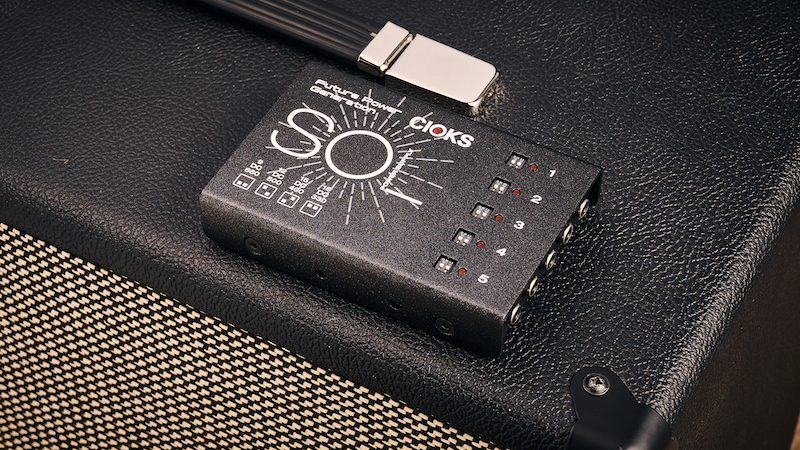Guitar World Verdict
The Cioks Sol is a supremely useful five-output pedal power supply, with dip-switch-able voltage settings and a proprietary cabling system that trivializes powering devices with odd requirements. The light weight and low profile make it hugely travel-friendly – but it would be just as at-home serving your desktop devices in a home or studio setup.
Pros
- +
Lightweight and low-profile
- +
High-current, switchable voltage outputs
- +
No wall warts; only a kettle lead required
Cons
- -
Cioks’ power cables need more clearance
- -
Dimensions could make mounting difficult under small ‘boards
You can trust Guitar World
What is it?
I’m a pedalboard fan. My rigs are usually mothership-sized affairs, either to meet the multifarious needs of my various projects and commissions or to enable the pursuit of inscrutable noise. But there’s a time and a place for motherships – and sometimes, the small ‘board rules king. As someone who chops and changes my signal chains a lot, I need a small-board pedal-powering solution that accommodates. Enter Cioks.
The Cioks Sol is a five-output pedalboard power supply, with five isolated outlets that can each provide any of four different DC voltages – 9V, 12V, 15V and 18V – simply by the toggling of some top-mounted dip switches. Each output is capable of supplying up to 660mA of juice, too, ensuring no digital pedal goes hungry.
This versatile, forward-thinking pedal power supply is part of Cioks’ forward-thinking Future Power Generation range, launched in 2017, that leaves Cioks’ pre-existing linear power supply architecture behind in favor of new switch-mode power supply (SMPS) designs.
Now… who’s up for an electronics lesson?
A majority of rightfully-lauded pedalboard power supplies use linear power supply topology, which typically sees a toroidal transformer supply isolated AC power to a rectifier, filter and regulator to create clean, smooth DC output. The power is great but comes at an efficiency cost – not to mention the weight of that transformer, and all that circuitry.
SMPS technology, meanwhile, uses transistors, switching on and off at high frequencies, to convert and regulate an incoming DC voltage. This approach leads to increased power efficiency, smaller power supply footprints and overall lighter-weight power supply sections – at the cost of some increased noise from that high frequency switching.
Linear power supplies have ruled the roost in the guitar space for this reason; as with anything techy, though, time and money have led us to SMPS designs that are much quieter – as demonstrated by this quiet, small, light and highly-capable small-pedalboard power supply.
All the latest guitar news, interviews, lessons, reviews, deals and more, direct to your inbox!
Specs
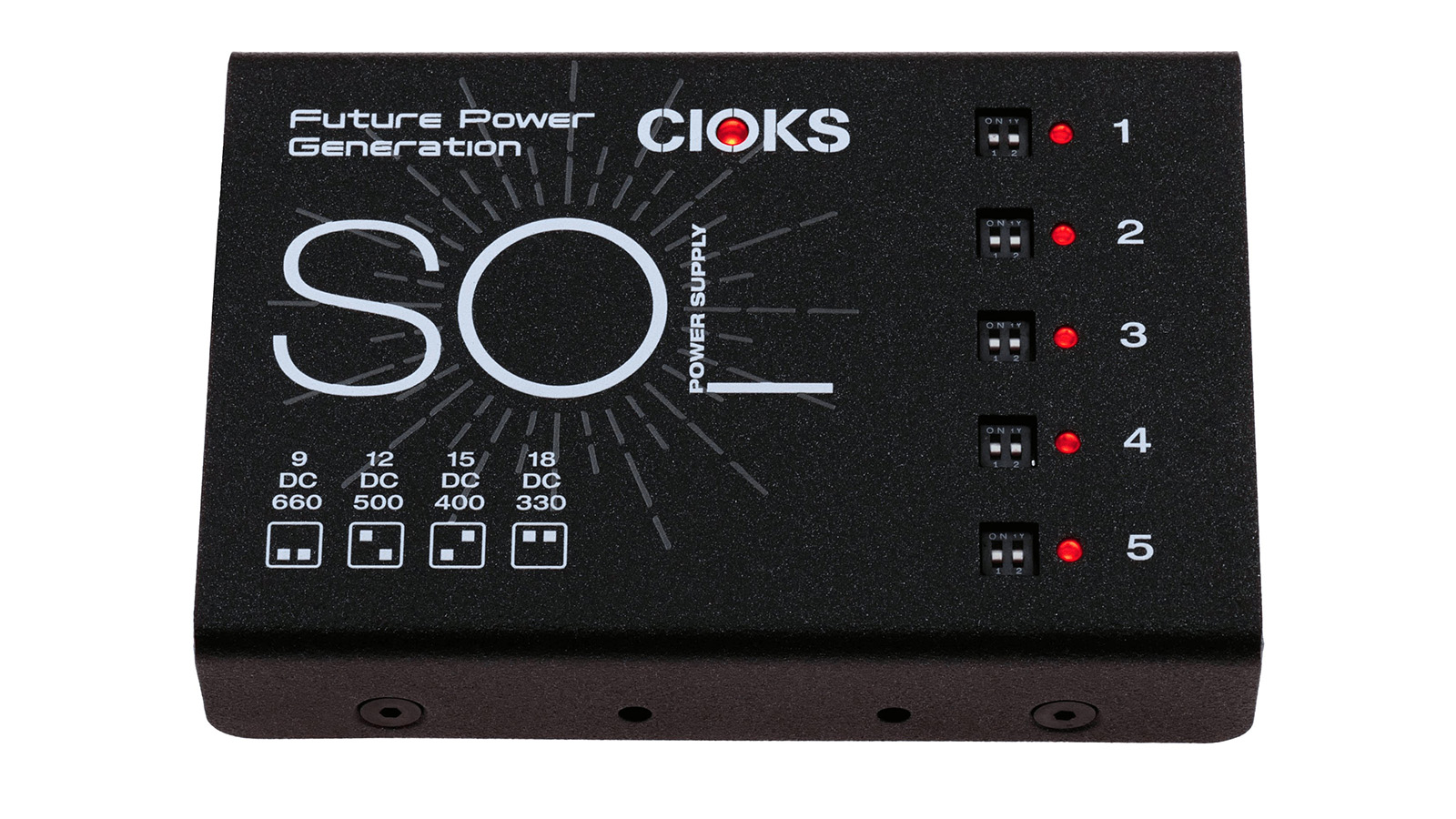
- Launch price: $199/£155/€150
- Type: Isolated, switch-mode pedalboard power supply
- Features: 5 x switchable isolated outputs – 9V/660mA, 12V/500mA, 15V/400mA, 18V/330mA; power input (IEC cable)
- Dimensions (HWD): 1” x 5.2” x 3.5”
- Weight: 410g/0.9lbs
- Contact: Cioks
Build quality
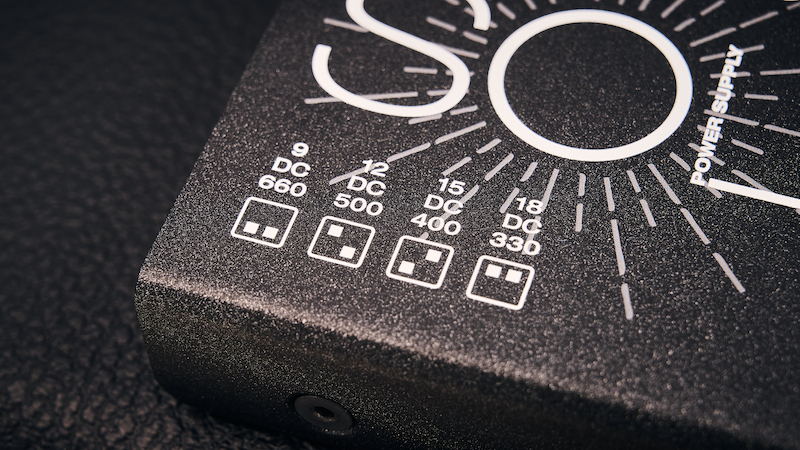
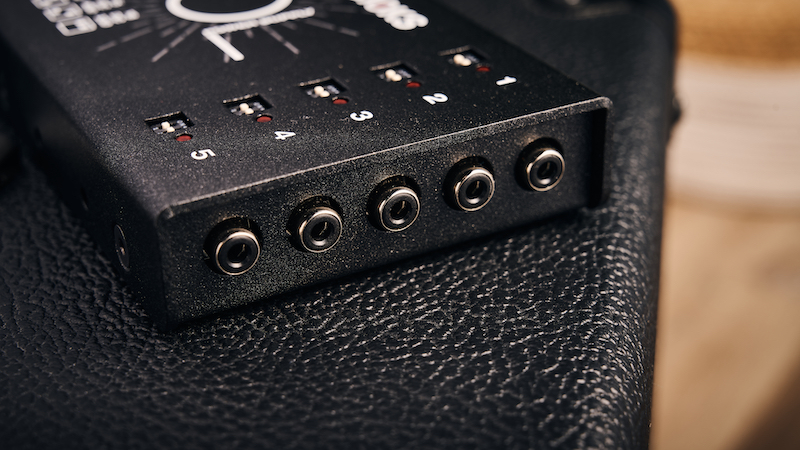

Build quality rating: ★★★★½
The Cioks Sol is of extremely solid build; despite being lighter than other isolated power supplies, it still has some reassuring heft to it – no doubt imparted by the all-metal enclosure that all-but guarantees hardiness wherever you install it.
If there are any points of particular weakness on Cioks’ switchable-voltage power supplies, they are the dip-switch interfaces that enable you to configure each outlet to your desired output. These dip switches feel stiff to use, and are recessed far enough from the top surface of the Sol that nothing is likely to interfere with them; maybe don’t put your drink near them, eh?
That top surface, incidentally, is ingeniously designed with an overhang on two sides; it extends past the IEC input on one side, and the RCA outlets on the other, providing reassuring coverage from knocks and dropped objects.
The Sol, like all of Cioks’ other power supplies, has a somewhat unique approach to supplying power to your pedals. The outlets aren’t the DC barrel jacks we’re used to, but instead RCA jacks – necessitating the use of proprietary Cioks Flex power cables, handily supplied in spades alongside the Sol.
The reasons given for this off-piste option are far from the Apple-style brand-trap conclusion you might initially come to, and in fact testament to the thought that’s gone into the design of Cioks power supplies in general. The RCA connector guarantees better mechanical and electrical connectivity, minimizing the risk of snagged cables killing the power or breaking the connector. The connector itself is more solidly connected to the power supply too – and much harder to break in general.
On top of this, there are many different types of Flex cable made for different power destinations, all of which are color-coded; this, in tandem with the asymmetry of the cables, makes it much more difficult for you to route your power cables wrongly.
In all, the Cioks Sol presents itself as a highly trustworthy little unit. Though it’s lightweight, it’s demonstrably sturdy – and with some clever design choices that uplift it beyond many others in its arena.
Usability
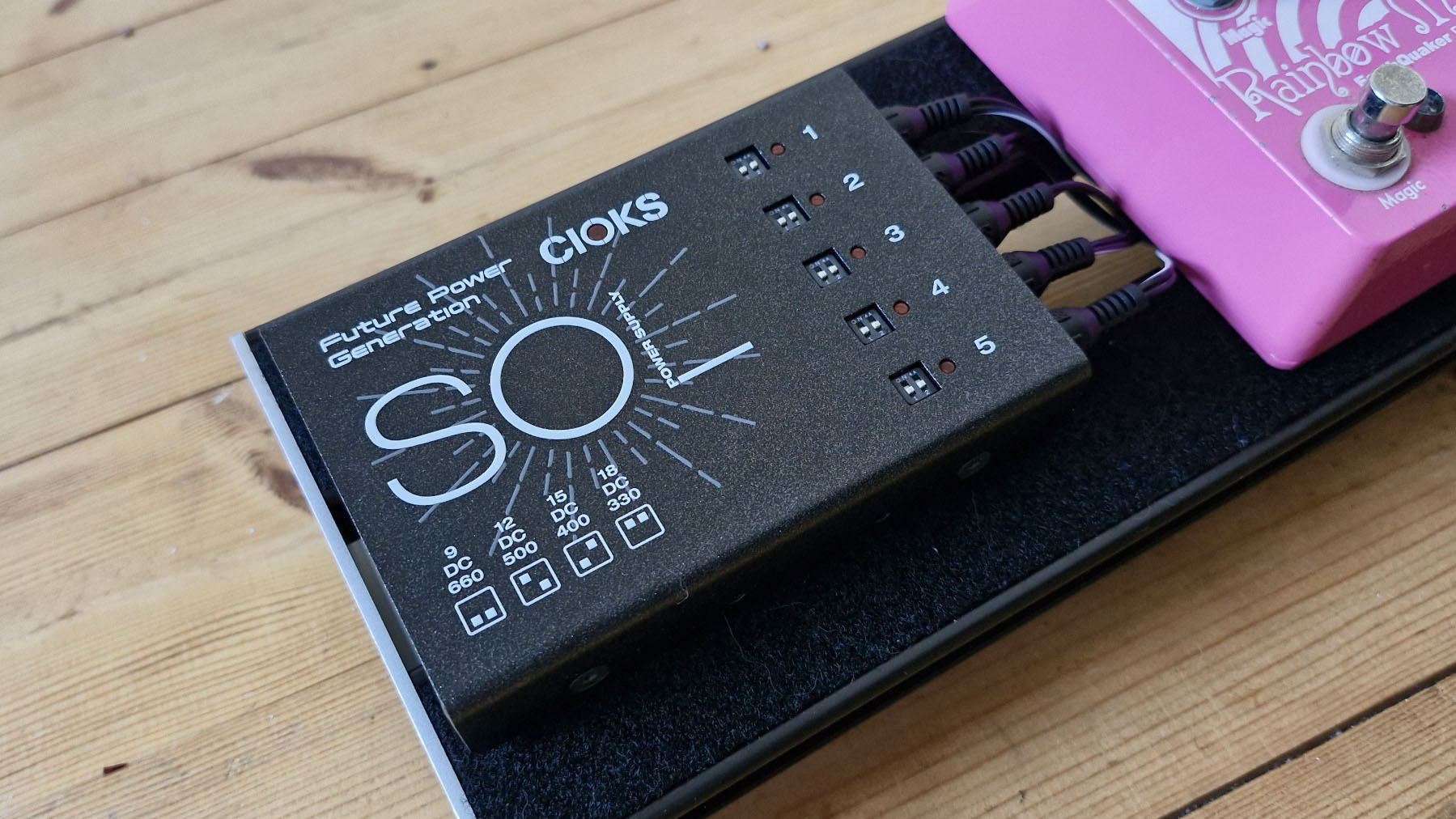
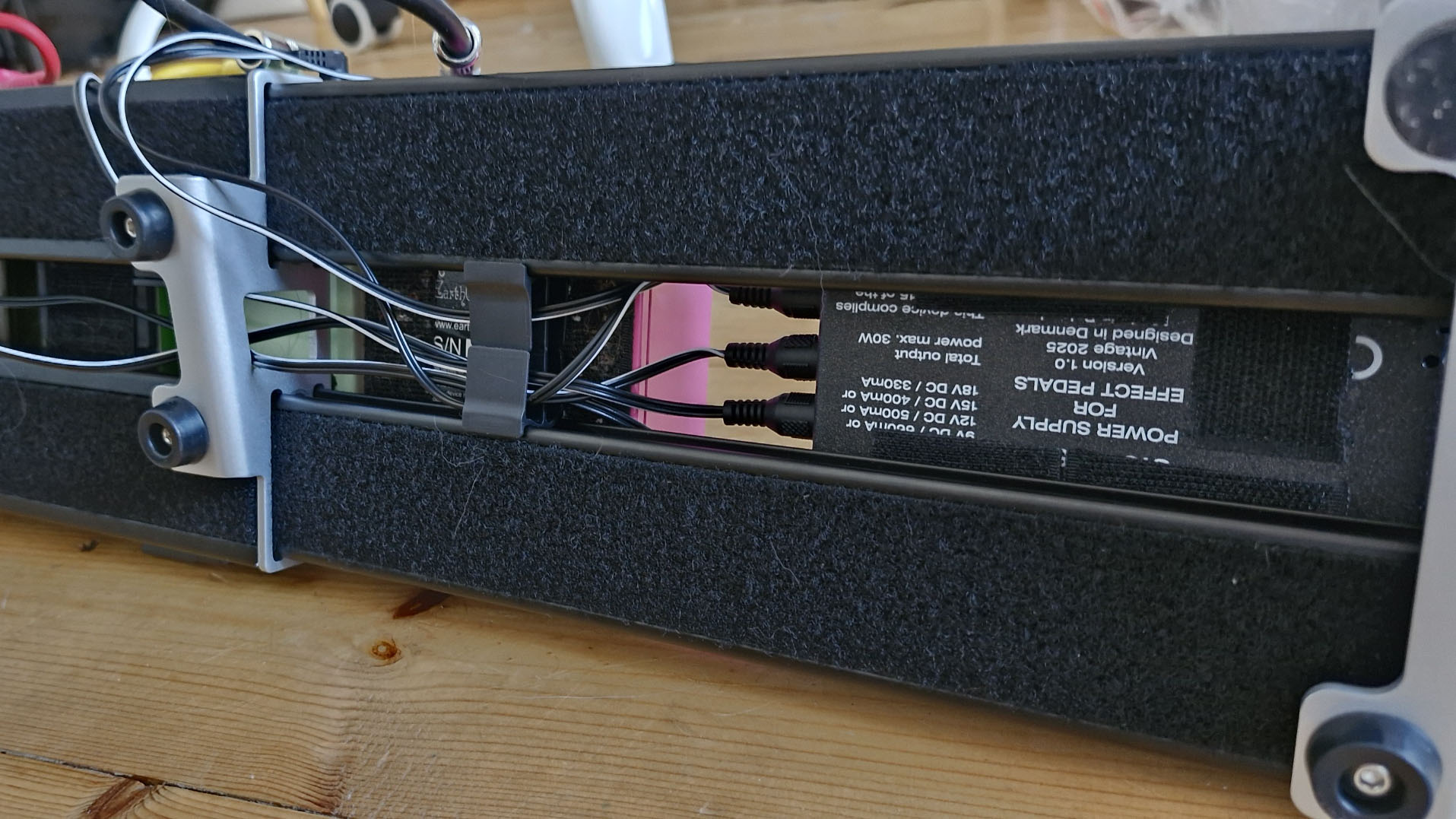
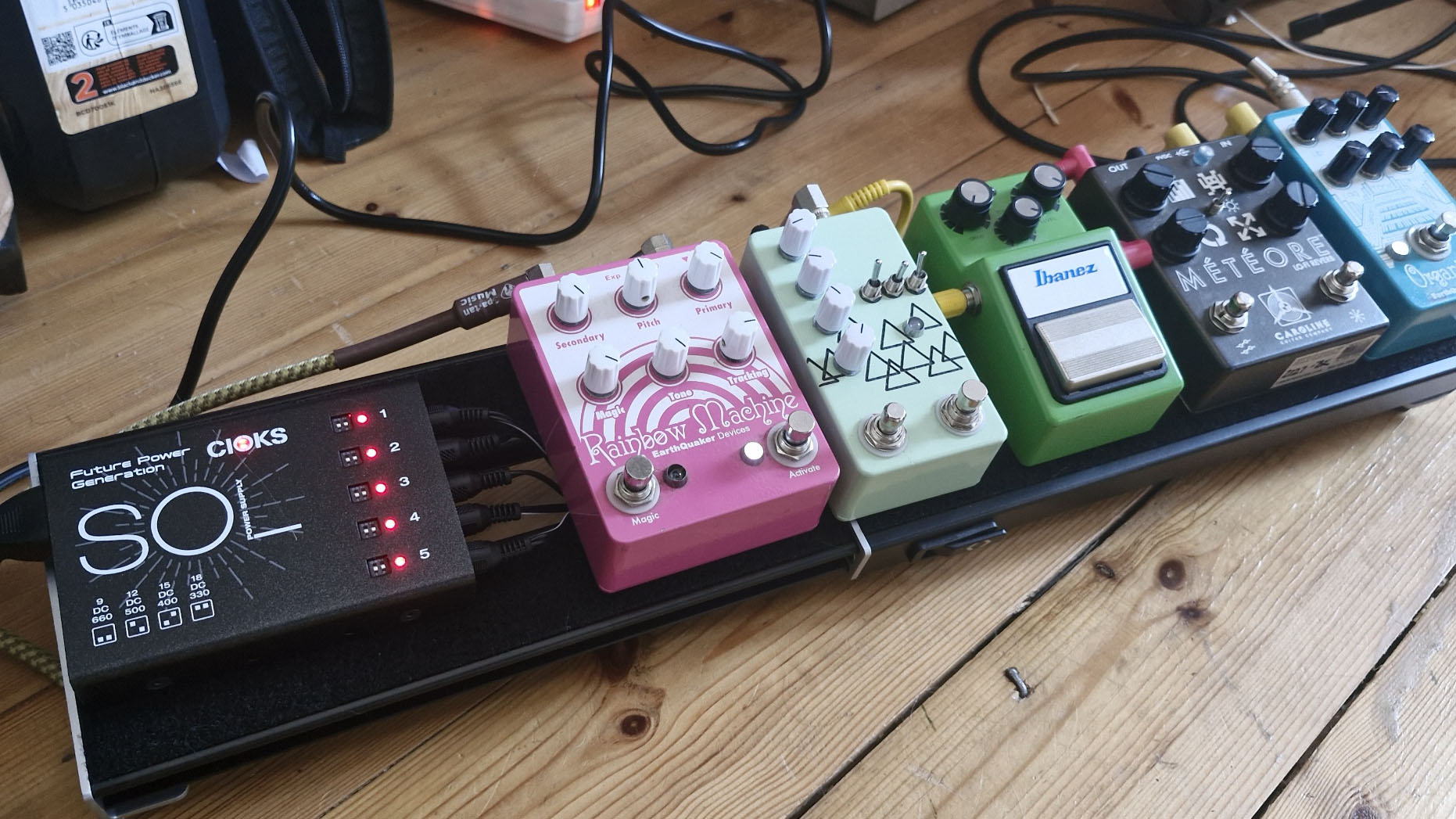

Build quality rating: ★★★★½
The Sol is a joy to use, in a number of ways. It’s very easy to install, for one – with enough of a platform to be robustly Velcro-ed to any underside surface. Cioks also provide two screws, which fit in pre-tapped holes on the side or bottom of the unit; this means you can hard-install it to a pedalboard for extra security, if you wish. I kept to Velcro for easy swappability.
I quickly warmed to Cioks’ RCA-jack Flex power cable standard – though the RCA connectors are a little longer than the average straight barrel jack connector, meaning you need a little more clearance between the Sol’s outlets and any boundaries on your pedalboard. As such, despite the low profile of the Cioks, you may find yourself needing a little more free space than you bargained for; even though the Sol could fit comfortably beneath the D’Addario XPND 1 pedalboard I used for testing, it was a little tight to fit it and maintain access to my cabling.
Mounting the Sol top-wise, as I ultimately ended up doing, was a blessing. The voltage-switching dip switches were made immediately available to me, which was especially useful when I started to experiment with different multi-device setups for at-home demo-writing and pre-production.
But first, the Sol lived on a D’Addario XPND 1 pedalboard, powering a variety of analog and digital effects that form my core set-up for writing and recording. This is my stable, easily-transported rig for solo shows and session work, for which silent power is not just a boon but a necessity.
The Sol introduced absolutely nothing to my audio signal, even with some susceptible digital pedals threatening to mess up my clean tone. Not only that, but the 660mA of juice provided at 9V is more than enough headroom for digital devices to start up without taxing your power supply, or stuttering worryingly in the process. This studio-friendly quietude, in a SMPS-slinging pedal power box, is simply brilliant.
The Sol came into its own again, separately, as a desktop power supply solution for my various soundscape-y and sound-test-y fiddlings. With the top-mounted dip-switches, I realized the Sol could handily power various devices above and beyond the pedals I use for recording guitar. It became a hub of sorts, powering my Critter and Guitari Organelle and my Omnichord as well as a rotating pool of pedal effects.
Substituting one device for another with different power requirements was easy, but more importantly reassuring; between the clear legend for achieving certain voltage outputs, and the color-coded power cables for identifying center-positivity, there was little confusion as to what each device was about to get power-wise. As someone not too keen on frying a pricey piece of hip synth history, this is highly practical, user-friendly peace of mind.
Verdict
I love this thing. The Cioks Sol’s low profile makes it an easy insert into any small pedalboard or studio setup. It slipped seamlessly into mine, giving me some fresh utility in the process too. For me, this is a no-brainer – either as a flexible member of your pro-grade travelling rig, or as a steady desktop power supply for your home-studio writing and recording.
Also try
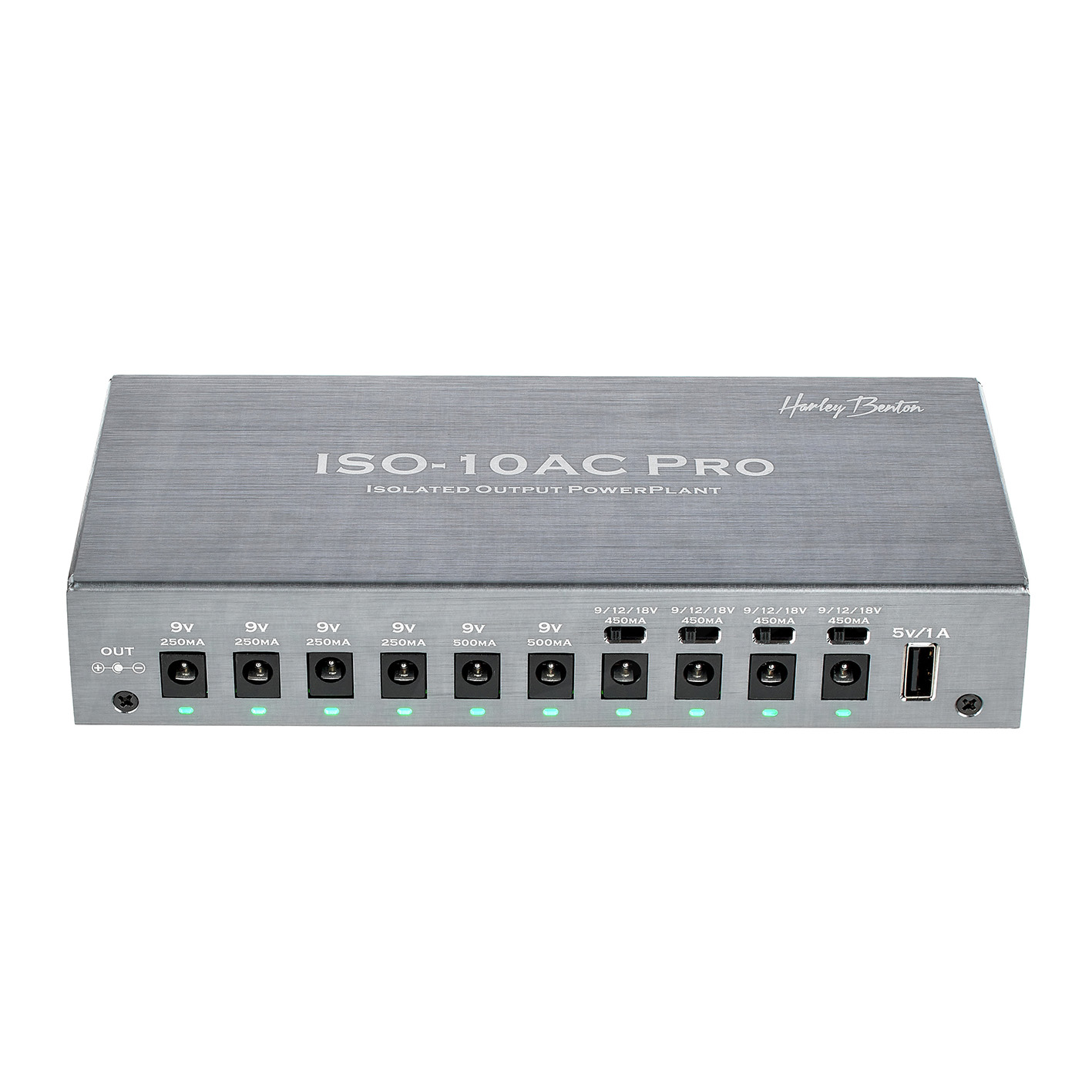
Harley Benton PowerPlant ISO-10AC Pro
$102/£91
If your needs are many but your budget is small, the Harley Benton PowerPlant ISO-10AC Pro is an ideal cut-price option that doesn’t cut down on features. There are four voltage-switchable power outputs, and a further six 9V outs (two of which are 500mA) – not to mention the USB outlet for handy charging.

Cioks DC7
$269/£215
If you like the Cioks Sol in principle, but just have a little too much on your ‘board to entrust to its five outlets, fear not – there’s a big brother in town. The Cioks DC7 has seven voltage-switchable outlets instead of five, and also tacks on a USB outlet for good measure.
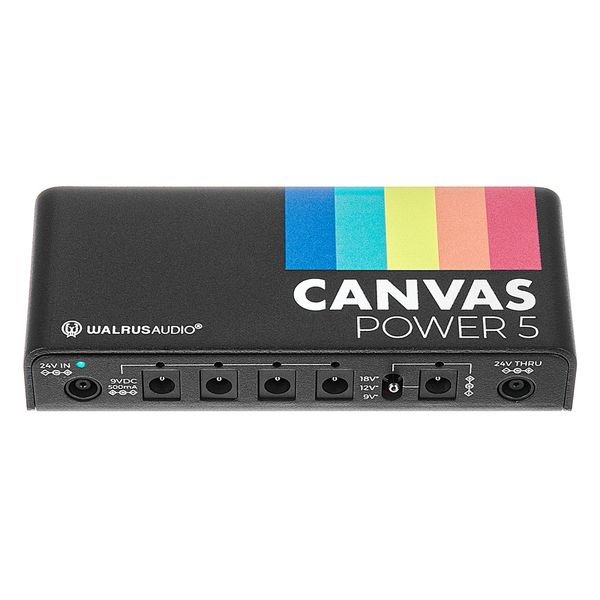
Walrus Audio Canvas Power 5
$190/£185
The Walrus Audio Canvas Power 5 isn’t quite as adaptable as the Cioks Sol, in that two of its five outlets are voltage-switchable – but it is just as, if not more adaptable in other ways. I love the daisy-chainability of the wider Canvas range, allowing you to easily modularize your pedalboard devices.

James Grimshaw is a freelance writer and music obsessive with over a decade of experience in music and audio writing. He's lent his audio-tech opinions (amongst others) to the likes of Guitar World, MusicRadar and the London Evening Standard – before which, he covered everything music and Leeds through his section-editorship of national e-magazine The State Of The Arts. When he isn't blasting esoteric noise-rock around the house, he's playing out with esoteric noise-rock bands in DIY venues across the country; James will evangelise to you about Tera Melos until the sun comes up.
You must confirm your public display name before commenting
Please logout and then login again, you will then be prompted to enter your display name.
